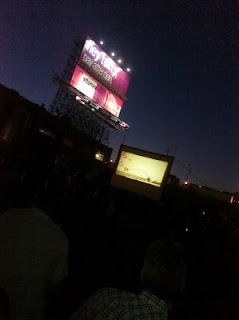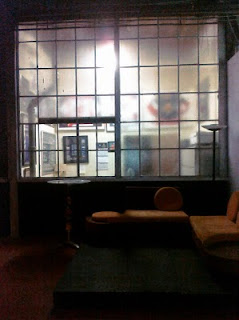Two vastly different, but related experiences of grandeur, have got me thinking about the value of big productions, culturally and otherwise. The Canadian Opera Company opened its latest season October 2nd with a startling, strangely unmoving production of Verdi’s Aida. The company, headed by the brilliant Alexander Neef, has seen an upswing in its popularity among younger culture vultures of the city (so much so that local fave Broken Social Scene will be headling their annual fundraising ball) while keeping their vital older subscriber base happy -until now, anyway. The production of Aida on now manages to confuse, infuriate, and perhaps worst of all… bore.
Like any good opera-goer, I’ve seen my share of staged Aidas -mainly at the Met, it should be noted, with live animals & a chorus numbering in the hundreds. Budget?!, you want to shriek when the gold-leaf-everythings are wheeled in alongside blinding elephants and bored-looking horses, what budget? Aida isn’t staged too often precisely because it’s so expensive, and often, the baggage that travels with it isn’t just the kind you can see. And the magic of the romance inherent within the tale gets lost amidst the grandeur. The tale of the Ethiopian slave-princess and her doomed love affair with the Egyptian captain Radames is Big Operatic Melodrama -which is fine -though coupled with Verdi’s stirring, awesome score, means you have the makings of an audience full of expectations: the set should be big, the emoting should be grand, the orchestra should be really, really loud. Right? Wrong, or so says director Tim Albery and COC music director Johannes Debus. Albery has purposely shied away from the Big Everything approach, eschewing grandeur in favour of story, subtext, and even meta-theatrical musings on the nature of performer-audience relations.
So there’s no Egyptophilia here, which would be a refreshing change if Albery’s production wasn’t so intent on going in the contrary direction for the sake of it. It’s a noble instinct to try to re-define an old operatic chestnut, but the idea kills the emotion. Set in some 1980s Trump-like super-state, where the Egyptian politicos are in tailored suits (a la Mad Men) and the ladies are trussed up like gaudy pseudo-Ivana cyborgs, the delicacy and beauty of both the story and the music are nearly lost. Nearly. Thank heavens (make that Isis) for Debus’ stunningly keen musical direction. Never have I heard such a beautiful, stirring, poetic rendering of Verdi’s score as here. It greatly helps that the cast, lead by the utterly awesome Sondra Radvanovsky (making her COC debut) are fantastic. Radvanovsky’s delicate, heartfelt approach to the material is gorgeous.
If only the same could be said of Albery’s direction, which positively reeks of over-stylization and heavy-handedness. While I enjoyed his underlining of the horrors of colonialism during the triumphal march, the gold-lame-come-stripper priestesses and humping skeletons did little to add to one’s understanding or appreciation of Ghislanzoni‘s libretto; the whole concept felt forced, insipid, and arrogant -and playing right into the kind of grandeur it was supposedly turning its back on.
In my next blog, I’ll be detailing the big event that did move me deeply -one that openly embraced largeness, and used it to incredible effect to create a sense of intimacy and wonder. Stay tuned…
Aida Photo Credits: © 2010 Michael Cooper




